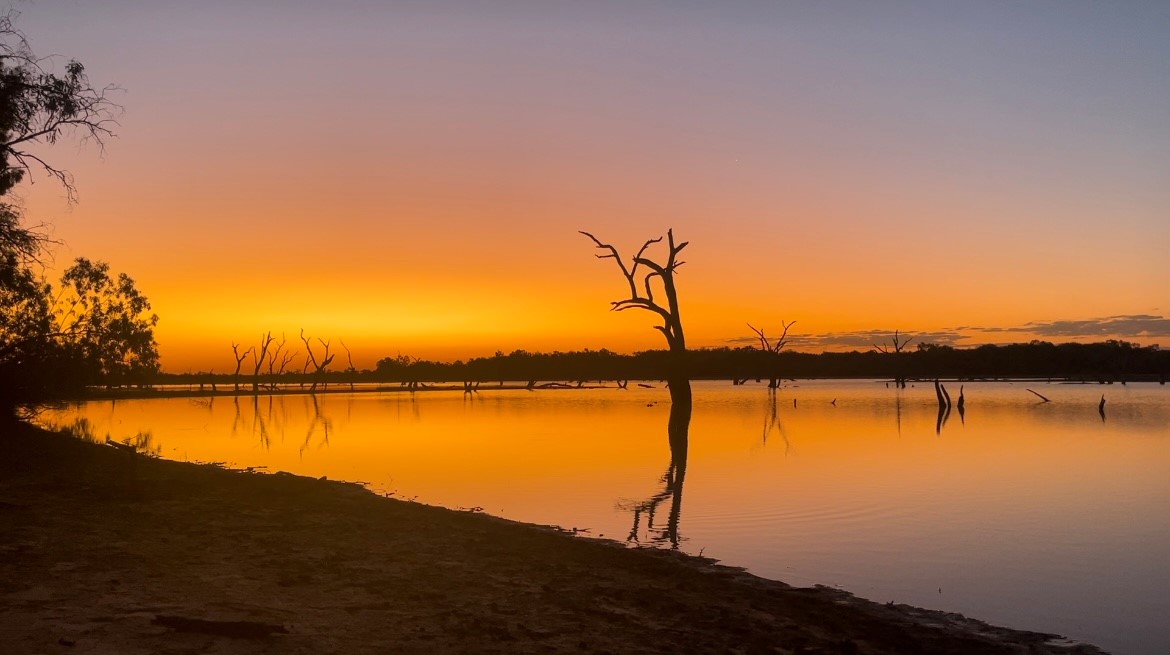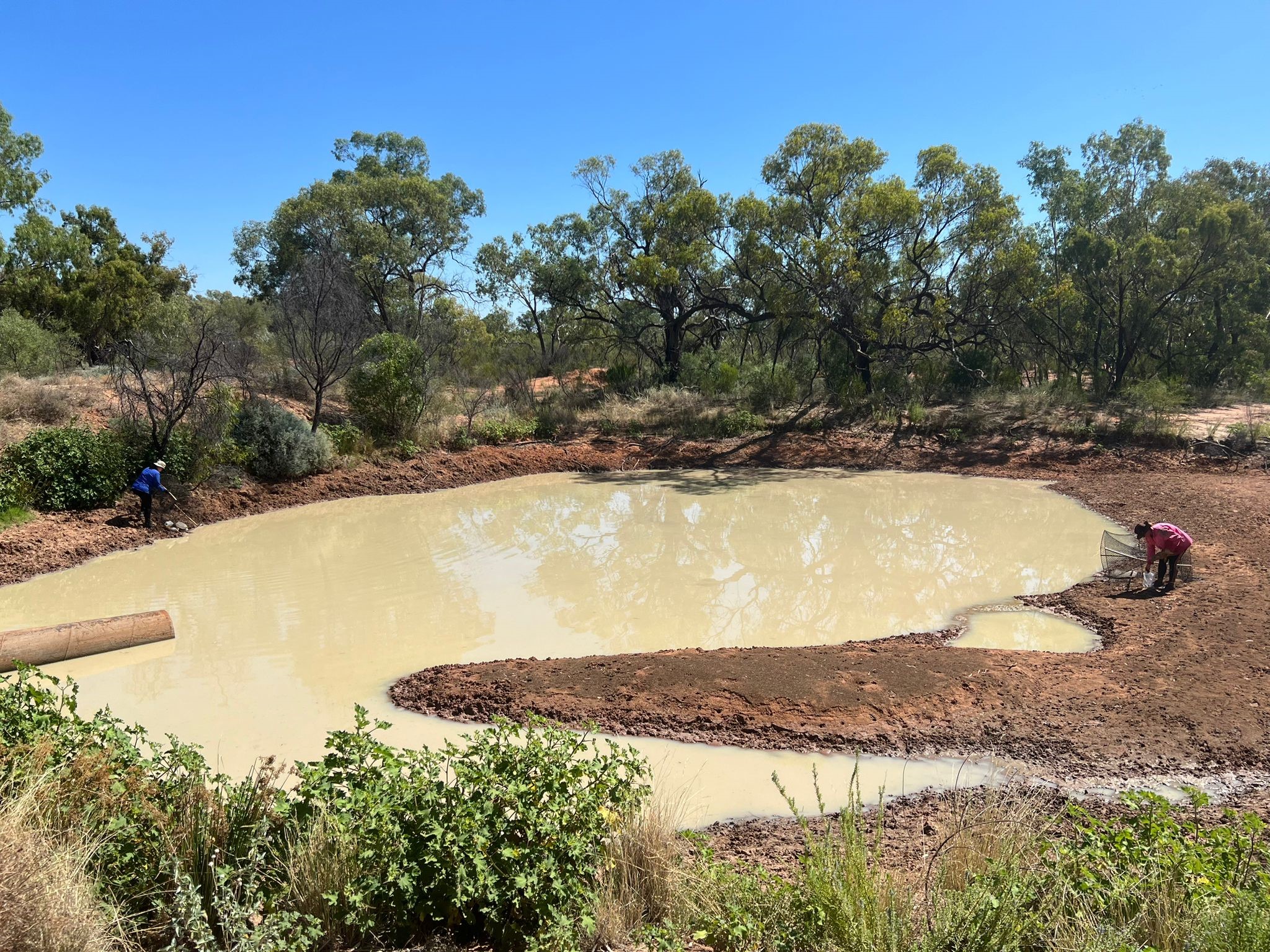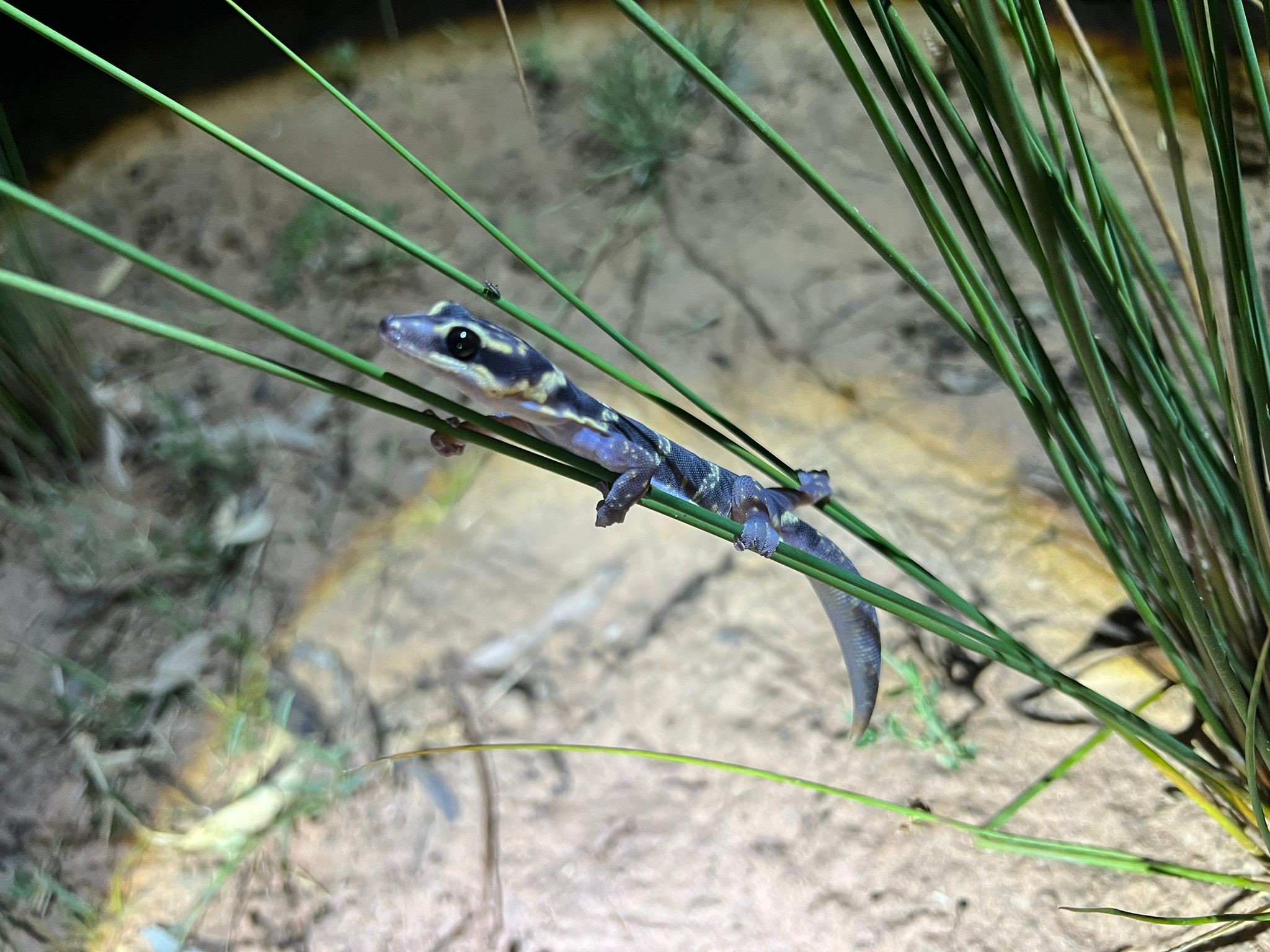Traditional Paakantyi Language of the Kurnu-Baakandji nation used in this article. (L. A. Hercus – Paakantyi Dictionary).
The Commonwealth Environmental Water Holder’s (CEWH) Science Program funds the Flow Monitoring, Evaluation and Research (Flow–MER).
Written by Dr Deborah Bower and Jessica York.

February 2023 saw Dr Deborah Bower and her team return to Toorale National Park (NP) in the Warriku (Warrego) Catchment of Western NSW to continue research with the University of New England (UNE) on freshwater turtle populations in floodplains. An ongoing project supporting the Long Term Intervention Monitoring (LTIM) project and the Flow Monitoring, Evaluation and Research program, the research conducted by Dr Bower and her team aims to look at the impact of floodplain water management on the ecology of freshwater turtles.
The Warriku (Warrego) Catchment includes Toorale NP (Figure 1) and is located 71 km west of Bourke. Since becoming a NP from its historic role as Australia’s largest sheep station, Toorale has become a large conservation area for many native Australian species, including freshwater turtles. The Warriku (Warrego) River passes through, and a myriad of dams and floodplain habitat contribute to a wealth of water ways for turtles and other species in which to thrive.
Water ways provide essential habitat for turtles to live, feed and reproduce since turtles are predominantly an aquatic species coming out of the water only to
lay eggs, bask or travel between water bodies. Healthy management of Commonwealth water for the environment is crucial for turtle populations survival. Without access to substantial water ways, turtles would eventually disappear and their benefit to the ecosystem, along with them.
Being an important part of water ecology, turtles are vital to the health of our water systems. Turtles are monitored using a variety of research techniques. Dr Bower traps turtles in hoop traps and fyke nets to enhance capture success in shallow water systems.
Native freshwater turtle species including the Murray River turtle (Emydura macquarii; Figure 2), Broad Shelled turtle (Chelodina expansa) and pumala-puka (Eastern long-necked turtle; Chelodina longicollis) occur in the Warrego River and at Toorale. The research is examining which turtle species use the floodplains, and when.
On a recent field trip both pumala-puka and Murray River turtles were captured in the floodplain in isolated waterholes. This was exciting because our knowledge of turtle ecology on floodplains is limited.

To add to this exciting discovery, hatchling Murray River turtles were also trapped in Boera Dam (Figure 3), indicating that at least some nests dug
in the banks of the river by mother turtles have evaded feral predators like foxes and pigs, and baby turtles have returned to the population.

This is great news since turtle numbers are in decline for several reasons, a predominant threat being predation by foxes. Wild pigs, birds of prey, and fish also predate on turtles and juvenile turtles, however foxes predate over 90% of turtle nests every year in some areas. This causes a severe lack of juvenile recruitment into established turtle populations which can take up to 10 years to reproduce. National projects such as the ‘1 Million Turtles’ initiative uses citizen science to estimate fox predation rates and turtle observations all over the country to better understand their current status.
Ongoing research contributes to the conservation work being done to help conserve our turtle species from the ever-present threats they face.
Besides researching turtles, it is also important to conduct biodiversity surveys on other species present on our floodplains. This trip also surveyed reptile species out on the floodplain including observations of a mulga snake (Pseudechis australis), bearded dragons (Pogona barbata) and kaltu (sleepy lizards), also known as a shingleback lizard (Tiliqua rugosa), and velvet geckos (Oedura cinta; Figure 4).

Fish populations were also present on the floodplain. The team witnessed beautiful sunsets in anticipation of nightly frog surveys and the photographs were a trip highlight as the Western Floodplains put on a show of colour. Day time delights offered a flock of kaakularinya (Pink Cockatoo, Lophochroa leadbeateri)
cawing noisily in parnara (gum) trees. A pleasing sight to witness, one not seen back home in eastern NSW. Overall a rewarding trip out west, revealing more to our precious floodplains than we knew and reminding us of the importance of research and conservation on Australia’s floodplains.
Managing water for the environment is a collective and collaborative effort, working in partnership with communities, private landholders, scientists and government agencies – these contributions are gratefully acknowledged.
We acknowledge the Traditional Owners of the land on which we live, work and play. We also pay our respects to Elders past, present and emerging.


